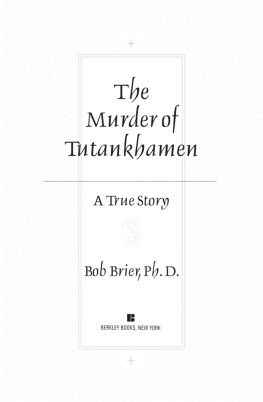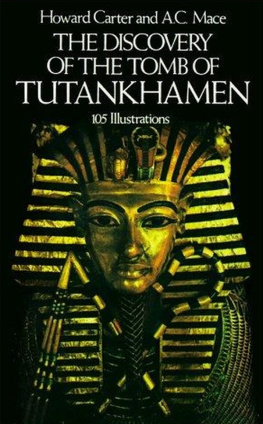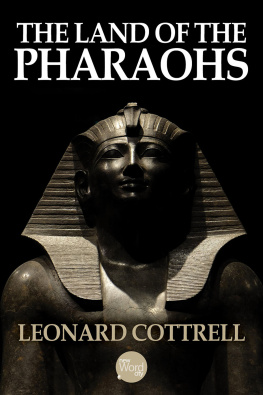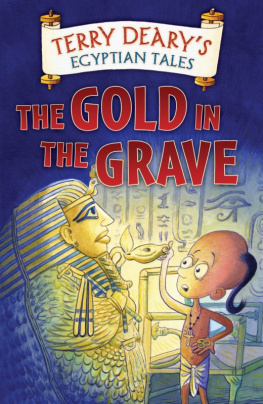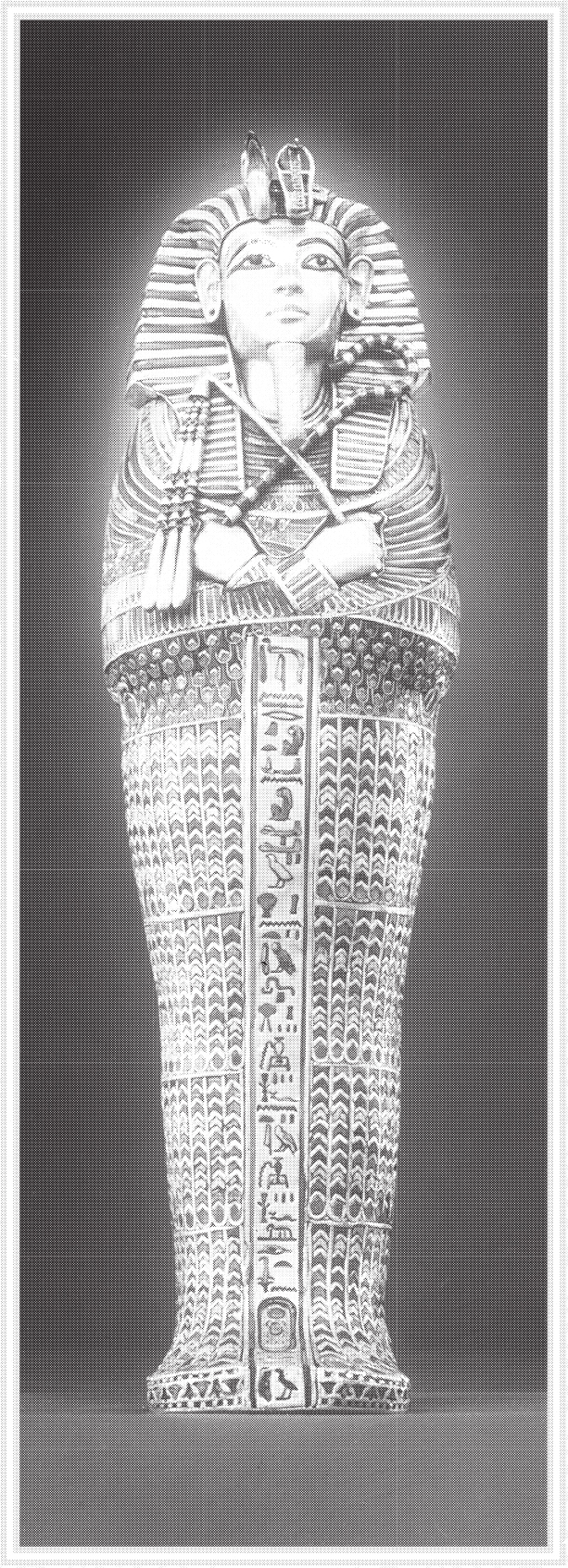X rays of Tutankhamens skull suggest a violent death. Was it accident or murder?... Why was the kings tomb so small and insignificant? Was it intended for someone else?... Several members of Tutankhamens family died around the same timewas it coincidence?... Why did Tutankhamens widow send desperate messages to the Hittite king, requesting marriage to one of his sons? And who murdered the Hittite prince on his journey to Egypt?... Who ordered the removal of Tutankhamens name from all monuments and temples, and thus from Egyptian history?... This fascinating, painstakingly researched book is the first to explore in depth the questionable circumstances of Tutankhamens demiseand to present a shocking scenario of betrayal, ambition, and murder. From one of our most renowned Egyptologists, this is an exciting journey into ancient historyand a 3,000-year-old mystery that still compels us today.
Using forensic, archaeological, and historical evidence, Brier dramatizes the turbulent times in which Tut lived and pieces together the explanation of his murder.
Natural History
Persuasive... accessible... exciting.
Boston Globe
For the first time we see Tutankhamen as a real person, not just the famous boy in the golden mask... Brier [paints] a cast of surrounding court characters worthy of Agatha Christie. In addition, he provides a very entertaining and readable account of Egyptian history leading up to the time of Tutankhamens reign.
Margaret George, author of The Memoirs of Cleopatra
All the right ingredients for the perfect murdera death centuries old; lives steeped in mysticism and mystery; a great love affair; deceitful priests; power-mad politicians and soldiers waiting to strike on the command of a betrayed leader... it all adds up to one killer of a thriller... A breezy blend of Indiana Jones and Ann Rule working away under the scalding Egyptian sun.
Lorenzo Carcaterra, author of Sleepers and Apaches
A clear and convincing case... an intriguing piece of speculation.
Publishers Weekly
The miraculous sort of book that makes the arcane understandable. Brier brings the study of archaeology alive and transports the reader back to a vibrant, if vanished, world.
Michael and Kathy Gear, authors of People of the Masks
Most Berkley Books are available at special quantity discounts for bulk purchases for sales promotions, premiums, fund-raising or educational use. Special books, or book excerpts, can also be created to fit specific needs.
For details, write: Special Markets, The Berkley Publishing Group, 375 Hudson Street, New York, New York 10014.
A LSO BY B OB B RIER
Egyptian Mummies:
Unraveling the Secrets of an Ancient Art
Ancient Egyptian Magic
Encyclopedia of Mummies
The
Murder of
Tutankhamen

A True Story
Bob Brier, Ph. D.

THE BERKLEY PUBLISHING GROUP
Published by the Penguin Group
Penguin Group (USA) Inc.
375 Hudson Street, New York, New York 10014, USA
Penguin Group (Canada), 10 Alcorn Avenue, Toronto, Ontario M4V 3B2, Canada
(a division of Pearson Penguin Canada Inc.)
Penguin Books Ltd., 80 Strand, London WC2R 0RL, England
Penguin Group Ireland, 25 St. Stephens Green, Dublin 2, Ireland (a division of Penguin Books Ltd.)
Penguin Group (Australia), 250 Camberwell Road, Camberwell, Victoria 3124, Australia
(a division of Pearson Australia Group Pty. Ltd.)
Penguin Books India Pvt. Ltd., 11 Community Centre, Panchsheel Park, New Delhi110 017, India
Penguin Group (NZ), Cnr. Airborne and Rosedale Roads, Albany, Auckland 1310, New Zealand
(a division of Pearson New Zealand Ltd.)
Penguin Books (South Africa) (Pty.) Ltd., 24 Sturdee Avenue, Rosebank, Johannesburg 2196, South Africa
Penguin Books Ltd., Registered Offices: 80 Strand, London WC2R 0RL, England
Copyright 1998, 2005 by Bob Brier
Cover art: Charles and Josette Lenars/Corbis (dog): Farrell Grehan/Corbis (tomb)
Book design by Amanda Dewey
All rights reserved.
No part of this book may be reproduced, scanned, or distributed in any printed or electronic form without permission. Please do not participate in or encourage piracy of copyrighted materials in violation of the authors rights. Purchase only authorized editions.
BERKLEY is a registered trademark of Penguin Group (USA) Inc.
The B design is a trademark belonging to Penguin Group (USA) Inc.
PRINTING HISTORY
G. P. Putnams Sons hardcover edition: April 1998
First Berkley trade paperback edition: March 1999
Berkley trade paperback revised edition: June 2005
Library of Congress Cataloging-in-Publication Data
Brier, Bob.
The murder of Tutankhamen : a true story / Bob Brier.
p. cm.
Originally published: New York: Putnam, 1998.
Includes bibliographical references and index.
ISBN: 978-1-101-66475-9
1. Tutankhamen, King of EgyptDeath and burial. 2. PharaohsBiography. 3. EgyptHistoryEighteenth dynasty, ca. 15701320 B.C. I. Title.
DT87.5.B667 2005
932014092dc22 2005041085
Acknowledgments
In Egyptology it is normal to have a team of specialists working on a single project; this book is no exception. When knowledge failed me, which was often, colleagues always were there, ready to help.
On the medical-forensic front I have been doubly fortunate in that many of the experts are close personal friends and I often called on them at strange and inconvenient times. Dr. Gerald Irwin, head of Radiology at Winthrop University Hospital, was the first to suggest that Tutankhamen may have survived for quite a while after receiving a blow to the back of the head, and remained a close consultant throughout the writing of this book. Dr. Michael R. Zimmerman, director of Clinical Laboratories, Maimonides Medical Center, Brooklyn, New York, read an early draft of the manuscript and made important suggestions about the actual cause of Tutankhamens death following the blow. Dr. J. Michael Parry, Director and Traumatologist, Advanced Trauma Life Support, Maryland Institute for Emergency Medical Service Systems (MIEMSS), also made important suggestions about how to determine if Tutankhamen did indeed linger before death. As always, I have benefited from discussions with Ronald Wade, director of the State Anatomy Board, Maryland. In Egypt, Dr. Fawzi Gabella, head of the Department of Anatomy, Kasr el Einy Hospital, kindly permitted me to examine the two human fetuses discovered in Tutankhamens tomb. Dr. Nasri Iskander, Curator of Mummies, Egyptian Museum, Cairo, was most helpful in making available to me the mummy of Tutankhamens grandfather, Amenhotep III. I must also thank my collegues in the Paleopatholgy Association who were always willing to discuss the medical aspects of the case.
On the Egyptological front, my colleagues have been equally helpful. Dr. Ali Hassan, former Secretary General of the Supreme Council of Antiquities, permitted me repeated access to closed tombs. Dr. Mohamed Sallah, director of the Egyptian Museum, Cairo, kindly gave permission to examine objects in storage in the museum. In Germany, Dr. Dietrich Wildung, director of the gyptisches Museum in Berlin, allowed me to examine and photograph the finger ring indicating that the Vizier, Aye, married Tutankhamens widow. I will never forget the day when Dr. Hannelore Kischkewitz, curator at the museum, placed the ring in my hand. Thanks are also due to Diana Magee of the Griffith Institute, Ashmolean Museum, Oxford, for supplying a photocopy of Percy Newberrys letter to Howard Carter describing the ring. Closer to home, I would like to thank Dr. Dorothea Arnold, curator of the Egyptian Department, Metropolitan Museum of Art, New York, for granting access to the funerary collars worn at Tutankhamens burial meal, and for permission to reprint Harry Burtons 1920s photographs of Tutankhamens mummy. I would also like to thank Dr. Rita Freed, curator, Department of Egyptian and Nubian Art, Museum of Fine Arts, Boston, for the discussions about what daily life at Amarna must have been like.

